Apple may not know it, but it has a lot to prove with the iPhone 5. Though it created the modern smartphone market with the original iPhone five years ago, the last year has seen its lead diminish. Serious competitors have begun nipping at its toes, all running Android, an operating system developed, updated, and distributed for free by Google. iPhones continue to fly off shelves, but the vast majority of smartphones sold now run Android. It has become the Windows of the smartphone era. If you’re not buying an iPhone for any reason, chances are you’re going to get an Android phone. Companies like HTC, Motorola, LG, and Samsung constantly iterate on their designs, pumping out new phones three or four times a year, and Google itself releases two major updates to Android every year.
This year, half a dozen strong Android phones challenge the iPhone, and Samsung has gained so much popularity that it has done the impossible and made its newest phones, the Galaxy Note 2 and Galaxy S3 available on all U.S. carriers (and many others around the world). In the face of escalating competition, Apple seems unfazed, and is sticking to its strategy of releasing only one new phone accompanied by one OS update each year. That places a lot of pressure on the iPhone 5. Every iPhone has set standards for its release year. Google and its manufacturing partners have turned on the heat. Can the iPhone hold its crown, not just in sales, but in quality?
Design
Have you seen an iPhone 4? If not, Apple’s newest design is hot enough to melt your face. As for the rest of you: relax. The iPhone 5 retains the same exact style as its predecessor with a few key changes. Basically, Apple has peeled off the glass on the back and stretched the 4S out like a piece of taffy. If the last iPhone was a Kit Kat, the new iPhone would be a Hershey bar. But that may not be a fair comparison. Apple has taken the “candy bar” style moniker we used to throw at phones quite seriously. The new iPhone is thinner than most actual candy bars. At 7.6mm, it is also thinner than the 9.3mm 4S — and lighter too, weighing only 112 grams compared to the 4S’s 140 grams. Sadly, Hershey still has Apple beat at only 44 grams for its standard chocolate bar.
Luckily, an iPhone won’t melt in your mouth, or in your hand.
Removing that pesky glass from the back of the phone has helped Apple tone down and slim up the iPhone. Brushed aluminum covers the majority of the back, with two strips of colored glass lining the top and bottom.
The iPhone 5 comes in two familiar colors: black and white. Of the two, we prefer the white, as the brushed metal has a standard silver coloring to it that looks classy. The black model has an anodized “slate” finish on the aluminum, which doesn’t look bad, but does show signs of wear. After using the phone for about a week, a fellow journalist’s review unit already had a noticeable wear line on the bottom where silver showed through. If you buy the black iPhone 5, invest in a case to protect it.
Feel
Holding the iPhone 5 isn’t as much fun as looking at it. Apple has increased the screen size of the iPhone 5 from 3.5 inches to 4.0 inches, but it has done so without increasing the width of the screen at all. This makes the iPhone 5 (123.8mm) noticeably taller than the iPhone 4 and 4S (115.2mm). Unfortunately, it did not change the location of the power button to compensate — it still resides way up on the top of the phone. It should have been moved down onto the right side of the phone, much like the Galaxy S3, Droid Razr M, and a host of other, more comfortable Android devices. Android manufacturers have learned to deal with larger screens and taller phones.
The new iPhone is perfectly holdable, but to press power, volume, and the home button, you’ll need to shift your hand around more than you should have to, leading to more fatal iPhone drops. We should note that this is a bigger problem if you hold the phone with your right hand. Skeptics should go to a Verizon store and hold the Droid Razr M. It has a 4-inch screen as well, is about the same thickness, but it feels much more natural in the hand thanks to its button placement.
Complaints aside, we do applaud the new location of the headphone jack. By putting it on the bottom (like the Galaxy Nexus), it’s much easier to grab the phone out of your pocket without having to flip it around in your hands or adjust your grip. It’s different, but you’ll grow to love it. The new iPhone also comes with redesigned EarPod earbuds. (Read our full EarPods review.)
Long screen
Apple dragged the entire smartphone world forward in 2010 with the introduction of its Retina high-res displays, but the iPhone 5 represents more of an evolution than a revolution here. Apple has simply added to the resolution of the screen (1136 x 640) to compensate for its extra length, leaving pixel density at 326ppi and the ultra-sharp look we know and love intact. This is still a Retina display.
In terms of image quality, not much has changed, which is a good thing as far as we’re concerned. If anything, images look a little warmer, but that could also be a slight tweak to iOS. The bigger change might actually be that the touch sensors are now integrated into the glass, rather than under it. Besides making the pixels seem “closer” to the surface you touch, it eliminates the tiny grid you could see looking at the iPhone 4 and 4S screen off-axis in the right light.
It’s a good screen, but it’s very long. Because Apple has only added to the height of the phone, it now boasts a 16:9 aspect ratio, or full widescreen. This is fantastic, as it adds another row of icons, but it would have been nice if Apple had increased the width of the screen as well, if only a little. The Droid Razr M has a 4-inch screen that measures only a few millimeters wider than the iPhone 5′s, but that added width does wonders for onscreen navigation and typing. Despite having a larger screen, onscreen menus and keyboards still feel incredibly small on the iPhone. Apple doesn’t want to stretch its screen too much, but it may not have gone far enough. If you come from the iPhone 4S, you’ll likely applaud any added real estate, but those who have used larger displays may find the iPhone 5 cramped.
iOS 6
iOS 6 adds and tweaks a number of features from iOS 5, but the basic look and feel remain nearly identical. Though iOS remains the most user friendly and slick-looking smartphone operating system, it lags behind Android when it comes to background tasks and notifications. The notification bar (added last year) has been expanded with a few more goodies, but accessing notifications from the lock screen and eliminating needless notes are still awkward processes. On Android, it takes a tap and a swipe to achieve these, but on the iPhone, you have to feel it out. Apple, don’t be afraid to copy Android a little in this respect.
While we cannot complain about the stability of iOS, Apple’s rigid management of background tasks needs to lighten up. With a few exceptions, if you aren’t watching an iOS app download something, it likely isn’t happening. In most cases, iOS apps aren’t allowed to update in the background for more than a few seconds. This means that you cannot enter an app like Spotify, select a bunch of music to download, and let it sit. You have to keep the app open if you want it to actually download your music. The same goes for video apps like Amazon Instant (iPad) and even Twitter. Android apps have much more freedom to update in the background and the result is a phone that feels more connected to the world. Instead of having to search for things, they often come to you. iOS snuffs out most of what you can’t see. Even app updates cannot be automated, and the OS requires you to re-enter your admin password every time you want to download a new app, even a free one, from the App Store — an unnecessary feature to mandate.
Finally, settings in some apps are all in the Settings menu, some are in the apps themselves, and some are split between both locations. While we like what Apple is trying to do by aggregating all Settings, it may need to give developers a kick in the butt. Developers also need a kick in the butt so that they’ll update their apps to support the new 16:9 screen. Older apps have black bars on the top and bottom.
Overall, despite some areas where Apple’s control is stifling, iOS 6 remains a competitive operating system. It likely won’t lose much ground to Android outside of the geek community that cares most about the kinds of features we described above. Those people, like us, may also wish for better Google services integration into iOS. Those who use Google Maps are currently almost forced to use Android. The process of adding Google contacts was also arduous, and many of our contacts required reformatting to make the leap.
New apps
Many apps have been added, changed, and removed from iOS 6. The removal of YouTube and Google Maps (replaced by Apple’s own maps app), as well as the addition of Passbook and Facebook integration are particularly noteworthy. (Read our iOS 6 hands on.)
The new Apple Maps app has been rightly ridiculed and ripped apart a lot lately, so we’ll save you the trouble. That said, we should note that creating a worldwide mapping and turn-by-turn product to compete with Google Maps was no easy task. There is no way around having a lot of oddities and bugs with such a massive, high-profile launch. The test will be how efficiently Apple responds to problems and fixes them. The only real problem is that, currently, there is no way to download Google Maps. Google has submitted the app to the App Store, but Apple has not approved it. YouTube, which was also removed in the iOS 6 Google purging, is already available for download.
We’ve also already written extensively about Passbook, Apple’s first stab at a digital wallet. Oddly, to use it, you must first download a number of other supported apps from the App Store. Passbook merely aggregates things like boarding passes, movie tickets, store loyalty cards, and coupons for you. It’s an interesting idea, but the list of partners will need to grow before it’s usable to many of you.
Siri is still present and can do a few more things, but we’ve found her to be cripplingly slow the past few days. This may be due to the launch of the iPhone 5, but even on Wi-Fi and LTE it sometimes takes up to 20 seconds to get a reply.
Specs and performance
We can’t pit the iPhone 5 against our usual benchmarks for Android phones, but we wouldn’t subject you to that boring pissing contest anyway. Suffice it to say, it feels fast. From unlocking to loading apps and crunching 3D graphics, Apple’s new processor is up to the task in a way that previous iPhones have not been.
As best we can tell (Apple isn’t completely forthcoming with all specs) the iPhone 5 runs on a 1GHz dual-core Apple A6 processor, has 1GB of RAM, and comes with 16GB to 64GB of internal flash memory, with no microSD slot. Other specs include an 8-megapixel rear camera with LED flash, a 1.2-megapixel front camera, an 1136 x 640 pixel 4-inch LCD screen, and a 1,440mAh battery, which we’ll get into shortly.
Camera
There isn’t much to say about the iPhone 5′s 8-megapixel “iSight” camera, except that it’s amazing and continues to lead the industry. Apple’s camera app thrives because of its simple, no frills, set of options and quality photos. No camera is perfect, but the iPhone 5 improves over the 4S camera when it comes to low light, video recording, and capture speed (40 percent faster, according to Apple).
The front FaceTime camera is also finally improved a bit from the crappy, bottom-of-the-line VGA model on previous iPhones. It’s still not perfect, but it’s better and you might use it too. FaceTime is now available over 3G and 4G networks (though AT&T is threatening to charge for it).
Improvements aside, the coolest new camera feature has to be Panorama mode. Apple has created an easy way to take great panorama shots. Using an onscreen guide, you hold the iPhone vertically and move the phone from left to right. That’s it. It’s limited, but the panorama shots come out very nice. It may mark the first time many people have tried to take a panorama shot at all.
The Lightning connector
Never before have we heard so much fuss over such a small change to a phone. The fact that Apple changing its connection port on the iPhone 5 is this big a deal is a testament to just how universal and popular iPhone and iPod accessories have become in the last decade.
Yes, Apple has replaced the wide 30-pin connector in favor of a tiny “Lightning” connector, which provides the same functionality in a fraction of the space (and it’s dual-sided). While this makes sense from an engineering perspective, it also antiquates a massive ecosystem of Apple accessories and gadgets, requiring the use of a $30 adapter to bring them back to life. We enjoy having a smaller dust cubby beneath our phone and appreciate being able to plug the cable in from either side, but ultimately, we wish Apple would have packaged the adapter with the phone. As of this writing, there aren’t any Lightning accessories available to our knowledge, and the Lightning to 30-pin adapter won’t be available until late 2012. Until then, you’ll have to do with your iPhone speakers.
Talking and texting
Lest we forget what phones are really for, the iPhone continues to be a moderately good phone. We haven’t had issues with reception and calls came out as clear as calls usually do. The texting app is also unchanged and continues to be one of the most copied chatting apps around.
LTE performance
The iPhone 4S has already had a 4G logo stapled up top for months, but users may not realize that’s HSPA+ technology, not LTE like the new device. Beneath the branding fiasco that made these two look identical to consumers, in layman’s terms, you’re looking at the difference between an Impala and Corvette. If you have 4G LTE service in your area, the iPhone 5′s data speeds are leagues faster than what you’ll get out of older phones. In our Portland, Oregon office, we’ve been getting 12-14mbps download and upload speeds over an iPhone 5 on AT&T’s network. That’s on par with or better than other LTE devices on AT&T, but to give some context for those considering an upgrade, the iPhone 4S pulled about 1mbps down and 1mbps up on the same network. The iPhone 4 fared even worse by a wide, wide margin. If there’s a single compelling reason to drop $200 for a new iPhone and sign away another two years of your life, this is it.
In our Manhattan, New York office, we’ve been using a Verizon iPhone 5. Speeds have averaged about 6-20mbps download and upload speeds, depending on the time of day. So far, the phone is on par with other Verizon devices and LTE service standards in Manhattan.
Battery performance
What can we say: It’s “okay.” Apple has improved many things with the iPhone 5, but battery life isn’t one of them. Like the iPad 3, the new iPhone holds a charge well when idling, but when you’re using it, don’t expect an improvement in battery life over the iPhone 4S. We’ve only been using it a few days, but it hasn’t impressed us at all. With moderate use (not much downloading, but a lot of emailing and browsing), we’ve managed to make it through a normal 12-hour day, but never without being down to the wire.
Apple claims the phone will get about 8 hours of constant use. We’re hoping the next iPhone packs in more than a 1,440mAh battery, as most Android competitors have batteries in the 1,800mAh to 2,100mAh range. Competitors like the Galaxy S3 and Droid Razr Maxx definitely outshine Apple in the battery department.
Conclusion
The iPhone 5 has a lot to prove. While it’s definitely the best iPhone to date in most respects, a number of small issues hold it back from being the undisputed dominant phone this year. iOS app problems, awkward power button placement, a cramped screen (tall, but thin), a Lightning adapter delay, and unimpressive battery life are a few issues that haunt Apple’s sixth iPhone. But even with these issues, the gorgeous camera, beautiful “Retina” display, robust app ecosystem, and premium build quality make it a top contender and worthy of consideration by any smartphone buyer, Apple fan or not. With the Galaxy S3, a line of Razrs, the HTC One X/EVO 4G LTE, and many other top-notch phones hitting the market (including some Windows Phone 8), weigh your options. Those who use a lot of Google services should also be weary. We had a tough time importing our Google contacts and have yet to get all of our calendars synced up, among other things.
We recommend everyone put the iPhone 5 on their list of maybes, but unless you’re an unabated Apple lover, try before you buy.
Highs:
- Beautiful design
- Polished user interface
- Audio jack on bottom of phone
- Larger “Retina” screen
- Fast 4G LTE service
Lows:
- Lightning connector adapter MIA
- iOS Maps app has issues
- iOS lagging behind Android in some areas
- Screen is taller but not wider
- Weak battery life
- Poor Google services integration (and getting worse)
Click To View Images:
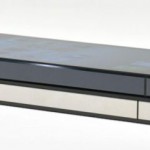
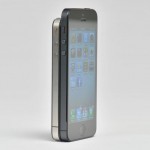
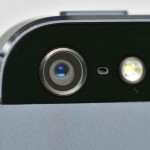
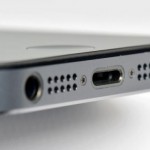
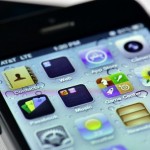
Article Written by: JEFFREY VAN CAMP


